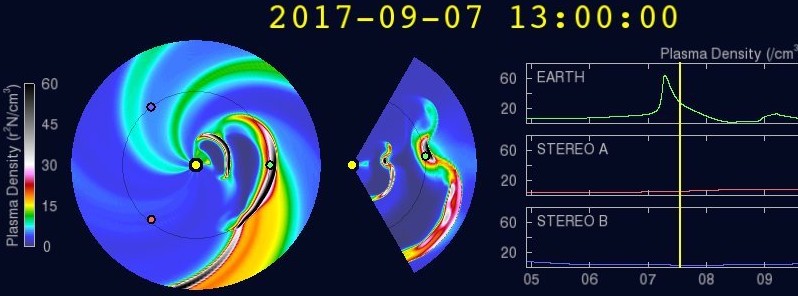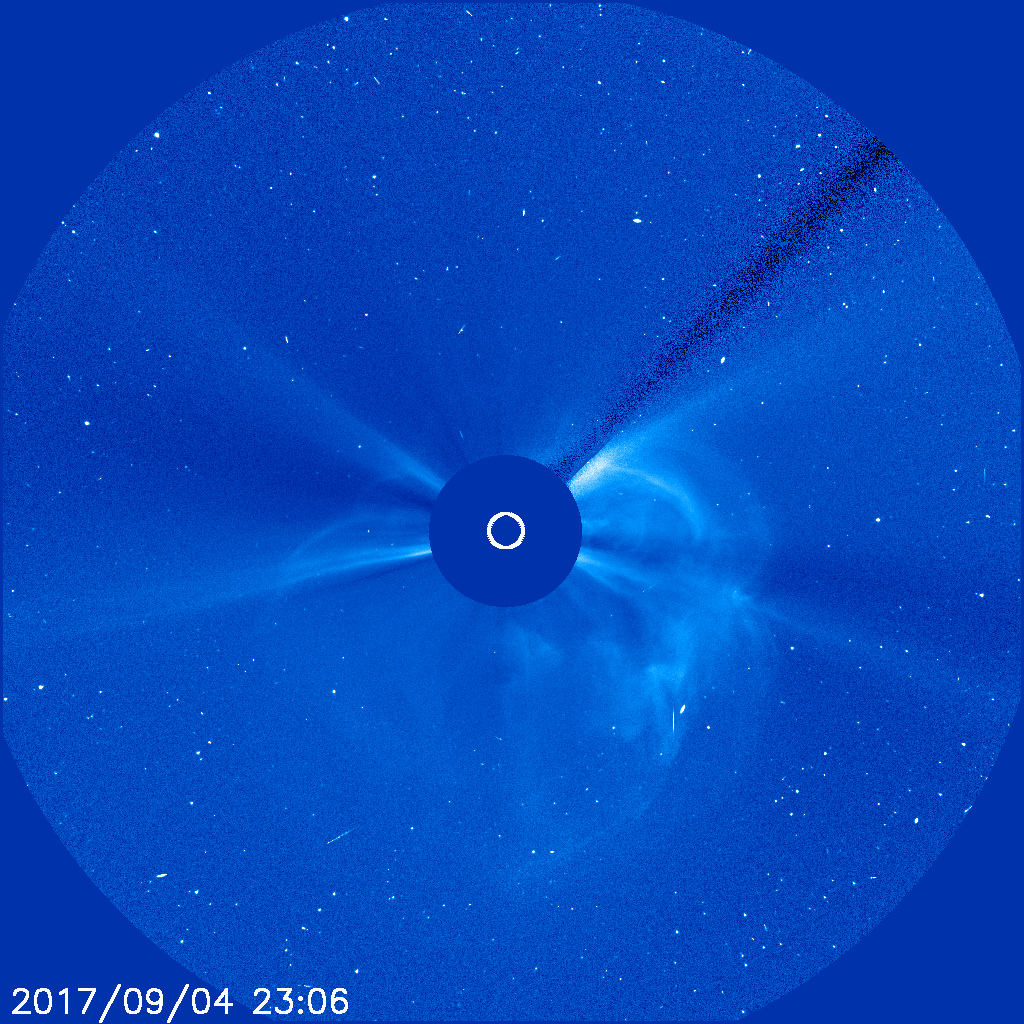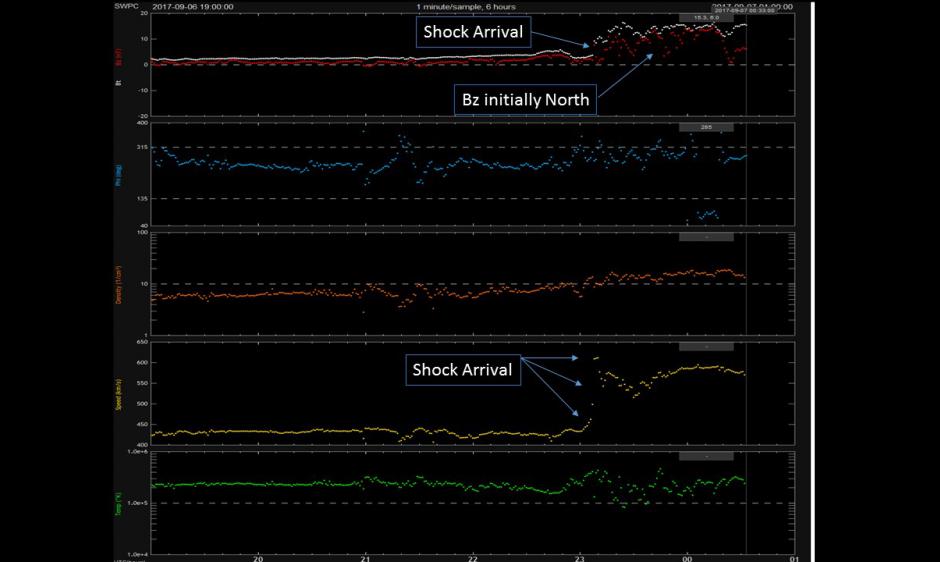Shock arrival from September 4 Coronal Mass Ejection

The coronal mass ejection (CME) produced by the M5.5 solar flare on September 4, 2017 arrived at the DSCOVR spacecraft on September 6 at 23:08 UTC and at Earth 30 minutes later. The impact did not spark a geomagnetic storm, but the potential still exists as the CME continues passing over Earth.
A sudden impulse was observed at several of Earth's magnetometers at 23:48 UTC due to effects from the shock arrival at Earth.

Coronal Mass Ejection associated with M5.5 solar flare on September 4, 2017. Credit: NASA/ESA SOHO/LASCO C3
While solar wind speed initially reached speeds of around 600 km/s and total interplanetary magnetic field strength (IMF) increased to around 14 nT, the Bz component was directed northward in the early stages of the event – an unfavorable orientation for escalating geomagnetic responses.
However, the potential for geomagnetic storming still exists as the CME continues passing over Earth.

Meanwhile, CME produced by September 6th X9.3 solar flare is now modeled and expected to arrive late September 8 or early September 9. The first CME visible on the model was produced on September 4.
The CME produced during September 6th X9.3 solar flare is visible in SOHO LASCO C3 imagery below:
Yesterday's X9.3 is the strongest solar flare of Solar Cycle 24 (2008 – present). Although X-class solar flares were expected (25% chance) since Region 2673 rapidly grew into a monster region and attained 'beta-gamma-delta' magnetic configuration, such powerful flare comes as a huge surprise, as our star is heading toward Solar Minimum. The previous record for the strongest flare of the cycle was X6.9 of August 9, 2011.
The previous cycle, Solar Cycle 23 (1996 – 2008), had 6 stronger flares than yesterday's X9.3, including X28+, also called the "X-Whatever" mega flare of November 4, 2003, the largest ever recorded solar flare in history. They were, X28+ (in 2003), X20.0 (in 2001), X17.2 (in 2003), X17.0 (in 2005), X14.4 (in 2001), and X10.0 (in 2003).
Read more: Largest ever recorded solar flare in history – The "X-Whatever" mega flare
Featured image credit: NOAA/SWPC

Commenting rules and guidelines
We value the thoughts and opinions of our readers and welcome healthy discussions on our website. In order to maintain a respectful and positive community, we ask that all commenters follow these rules.